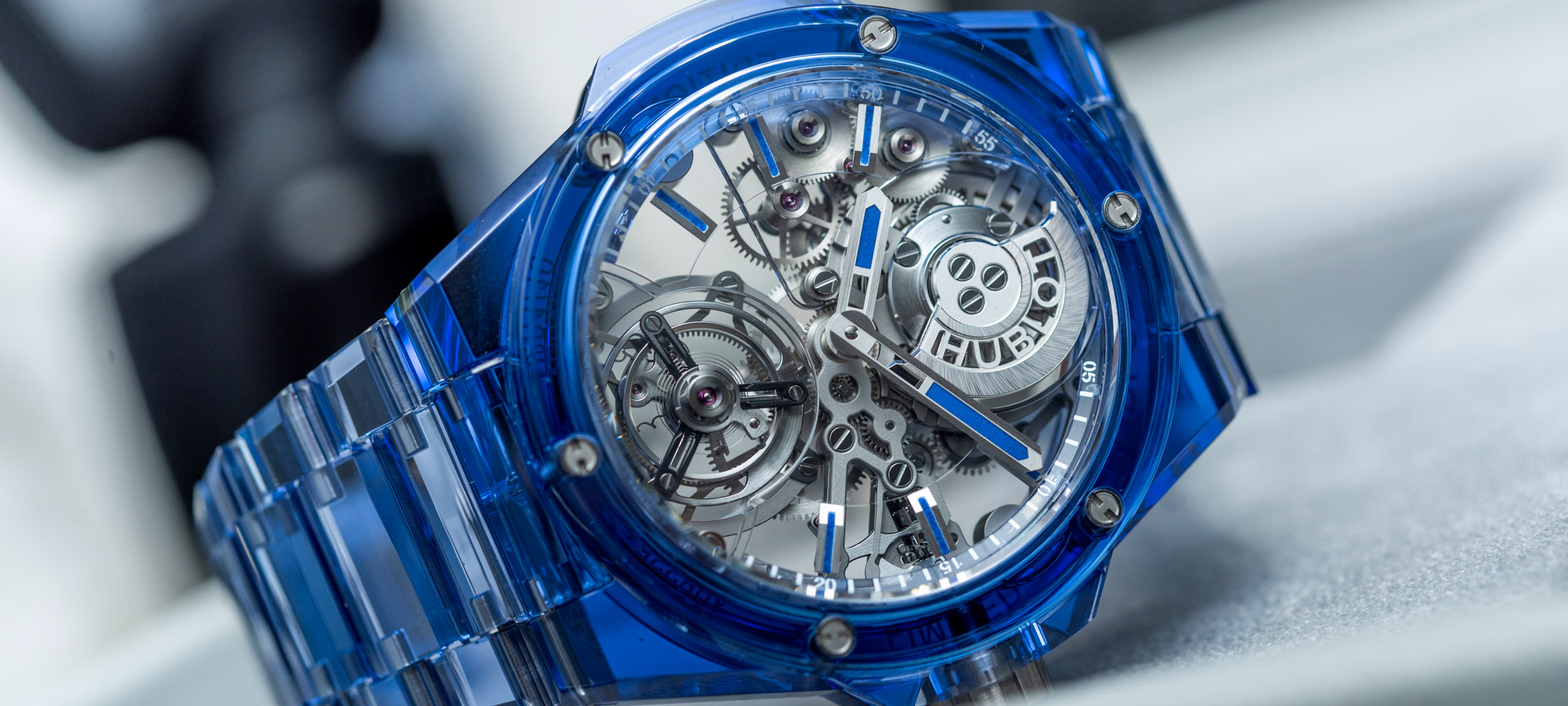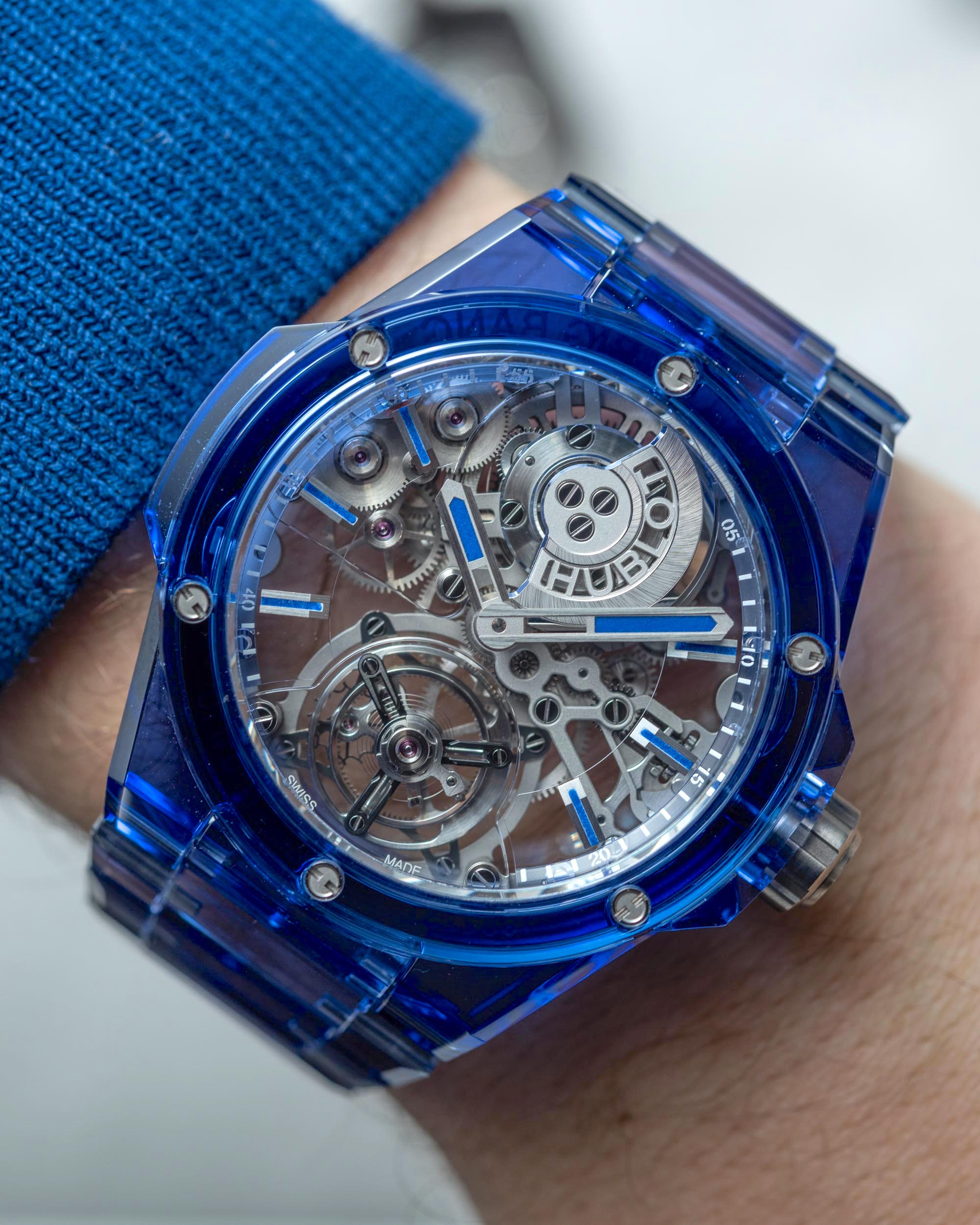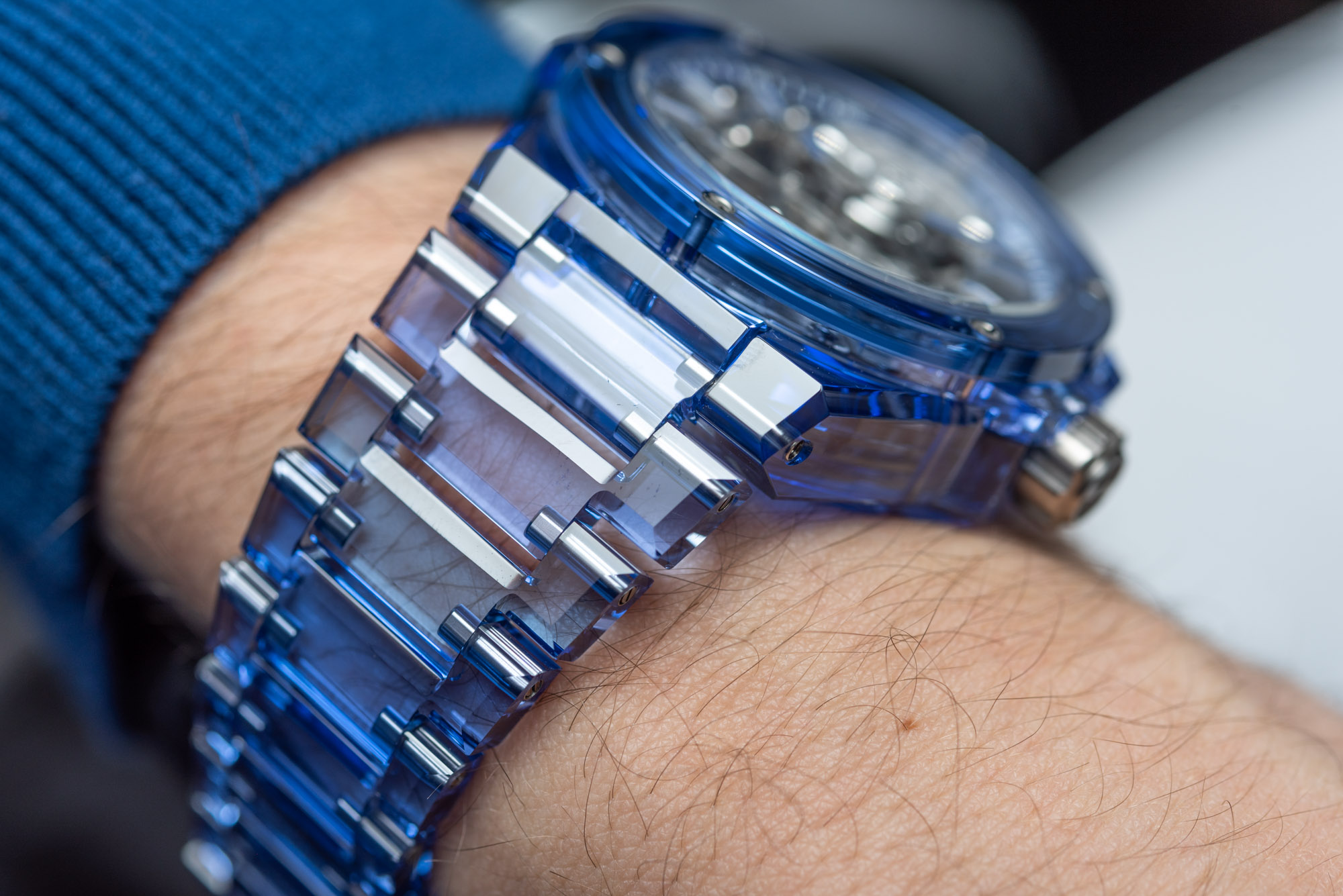
Even almost two decades into practicing — and at times mastering — its “Art of Fusion” approach to watchmaking, Hublot is still not given enough credit for what it has achieved in the field of practical application of materials sciences in horology. In other words, it is as though the community has gotten used to Hublot leaving everyone else in its trails in this important field. If the dial says “Hublot,” it’s apparently normal that we see mind-bending materials and their applications in watches, but is it actually supposed to be like that? Wearing the $500,000 Hublot Big Bang Integrated Tourbillon Full Blue Sapphire watch at Watches & Wonders 2023 reminded me of this conundrum.
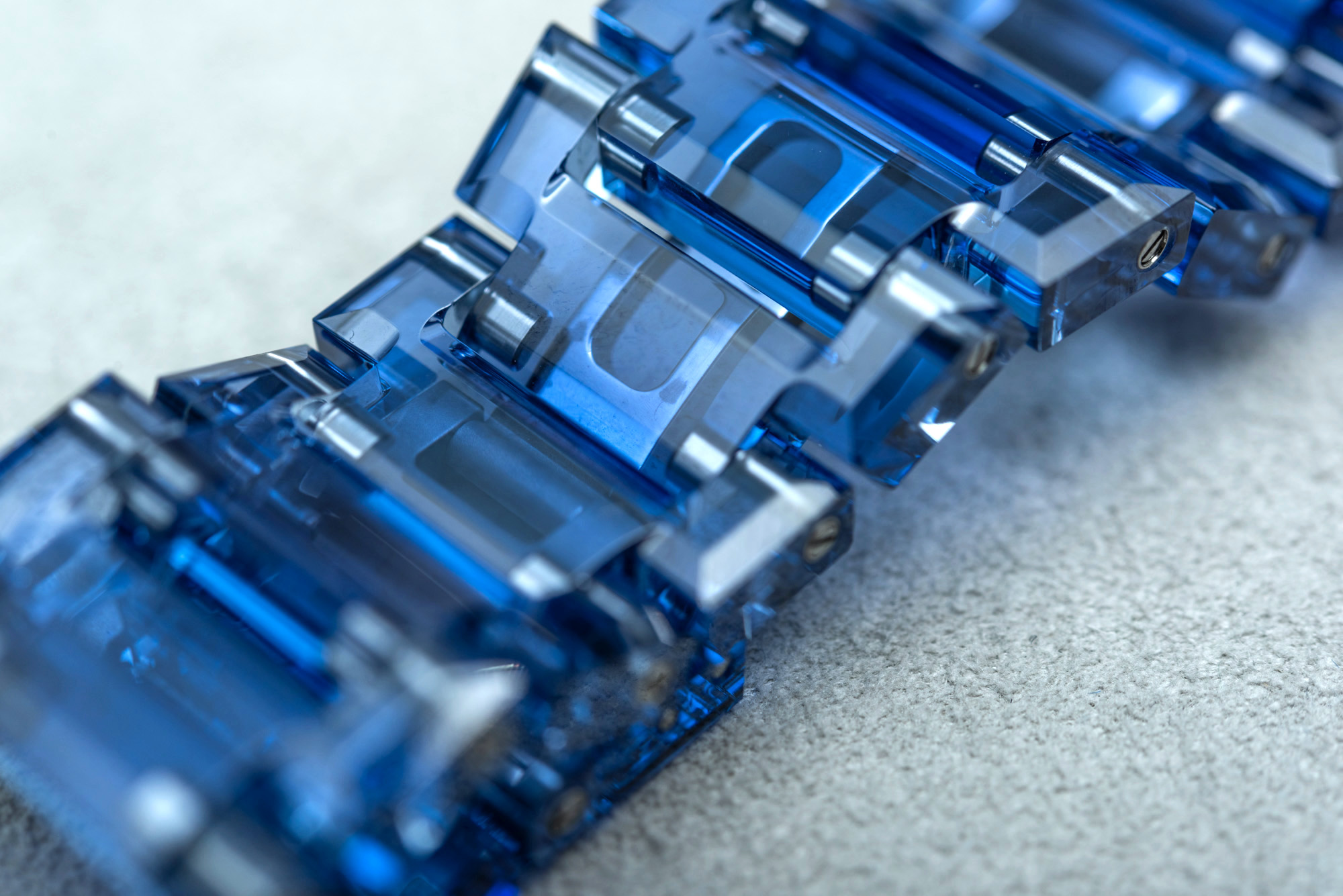
Scrolling through my Watches & Wonders 2023 photography archives, one brand stands out from the rest (and does so by some considerable margin) when it comes to presenting and applying thoroughly modern materials in watchmaking, and that brand is Hublot. We saw full Texalium and carbon fiber cases and bracelets, all-ceramic watches in saturated colors the likes of which everyone else is yet to figure out, multiple-colored sapphire crystal cases and bracelets, and yet more is to come later in the year. In the meantime, Rolex has finally launched a rather underwhelming presentation of grade 5 titanium in all of two references. So much of the rest is old-school steel and gold and platinum. Other celebrated historic brands like Jaeger-LeCoultre and Vacheron Constantin have been stepping away from using novel materials and are focusing on acceptable (for the price) levels of finishing on those same old materials, quietly abandoning their cool titanium cases and rubber-clad bracelets.
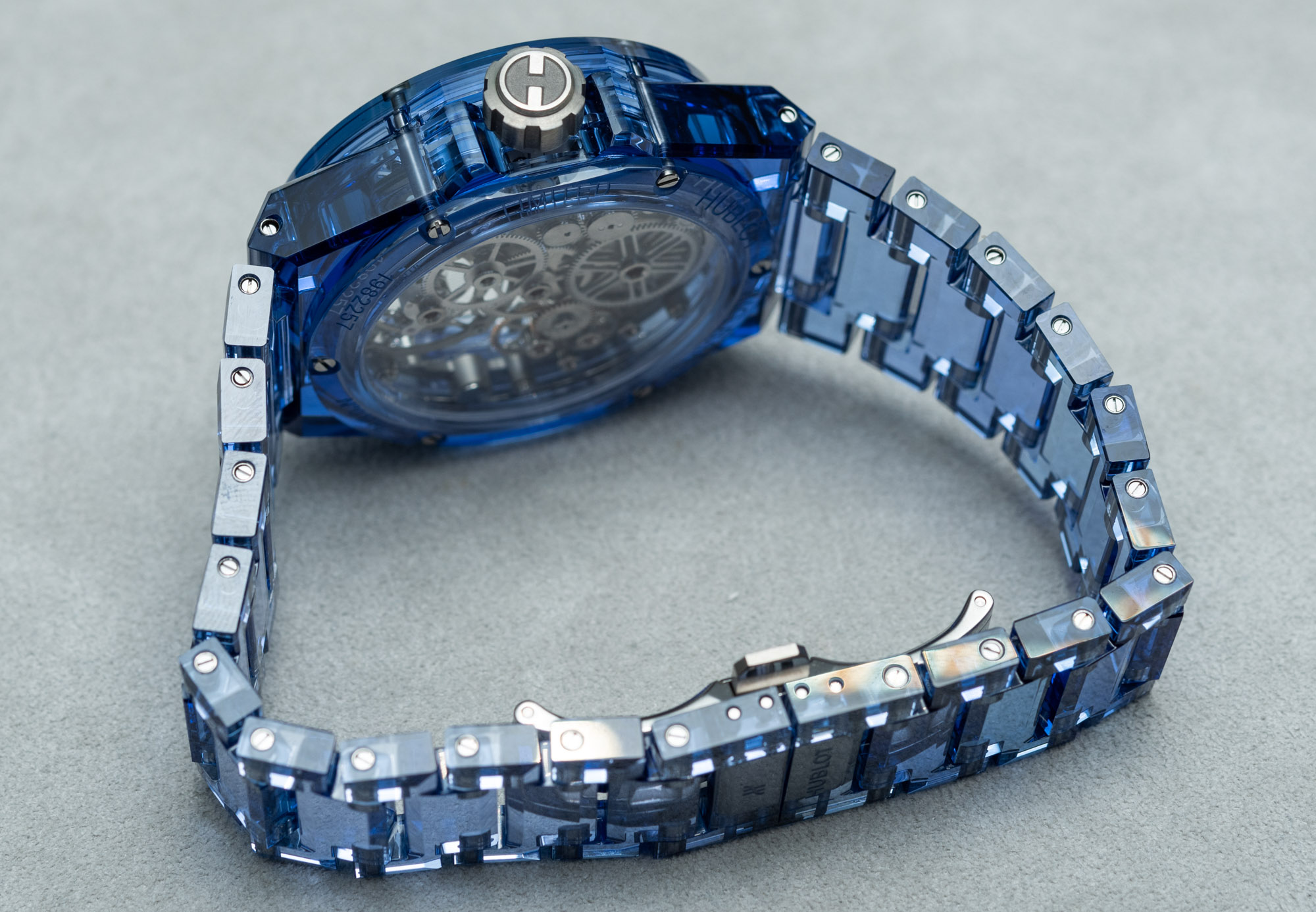
This is not to say that everything Hublot does is successful, and that’s especially true if you measure success based on a watch’s appeal to a conservative, traditionalist group of blue-blooded watch enthusiasts. However, they are successful if all you want is some utterly preposterous on-the-wrist entertainment. Case in point, the Hublot Big Bang Integrated Tourbillon Full Blue Sapphire is as ridiculous a watch as any to have on and it is so for three good reasons.
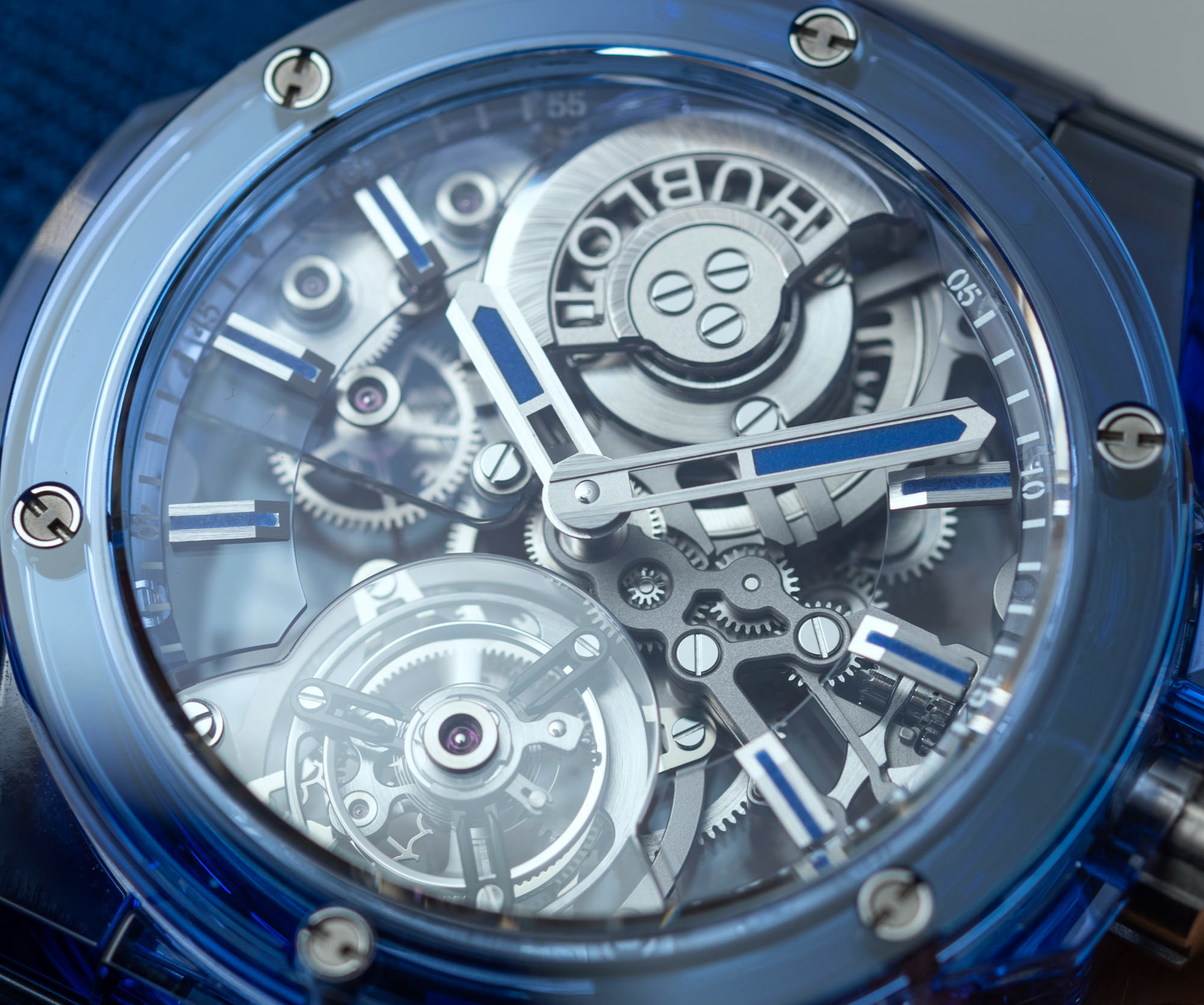
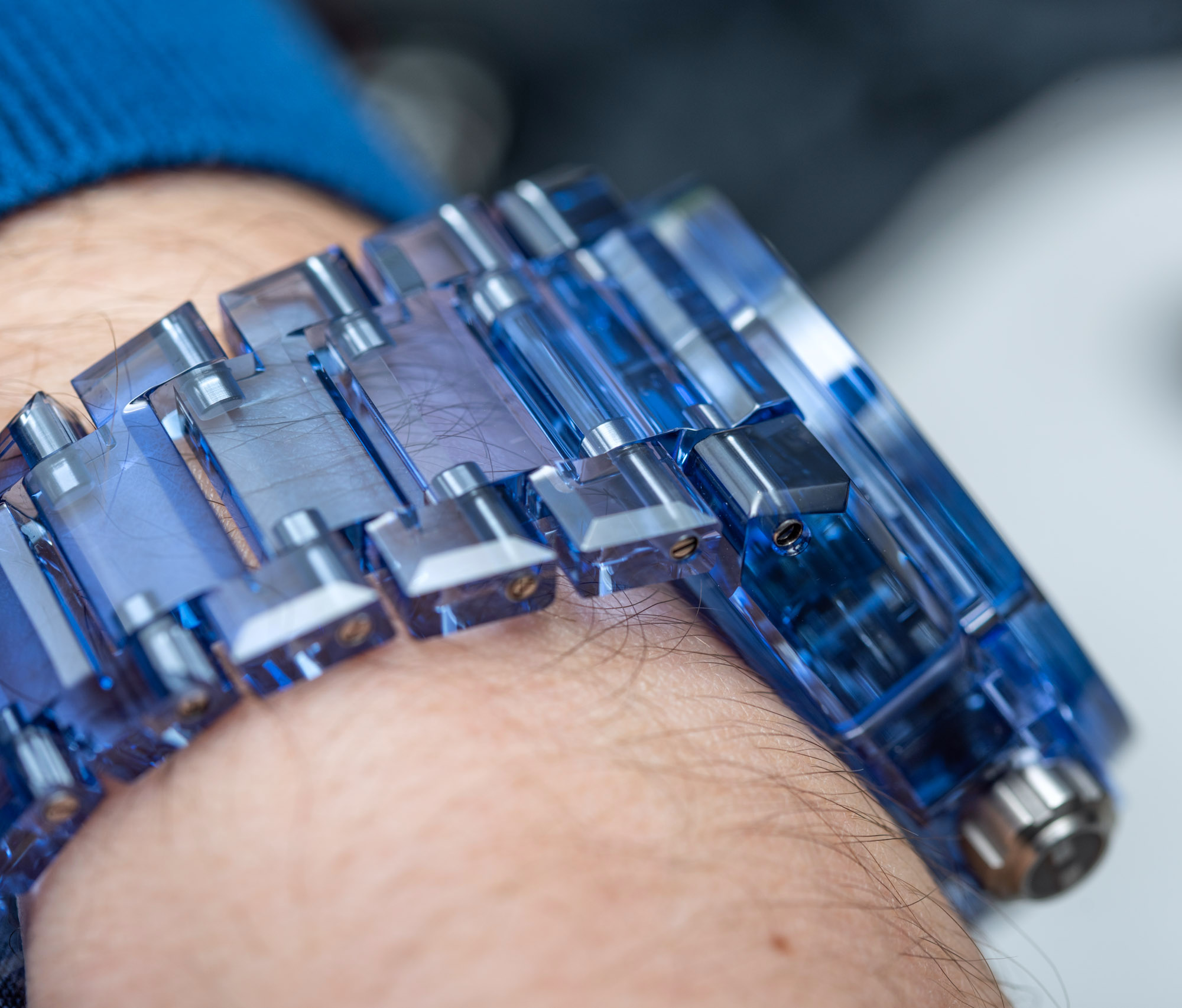
First, it has all the design elements of a watch designed for everyday wear, and yet it’s officially claimed to be rather fragile. Hublot launched its integrated bracelet three years ago as a rugged alternative to its staple rubber strap that came with almost all of its watches. Until recently, it was called the “Integral,” and that appears to have been renamed “Integrated” for 2023. The Hublot metal bracelet is your regular three-piece link affair spiced up with some ragged edges and a steep, vertical link profile which really isn’t much to write home about. Presenting this perfectly practical and ubiquitous design in full sapphire, however, certainly is. It’s like an SUV, but with lambswool floor mats. And just as those fluffy “underfoot carpets” can be optioned into a Rolls-Royce Cullinan, the Hublot Big Bang Integrated Tourbillon and its bracelet can be had in full sapphire.
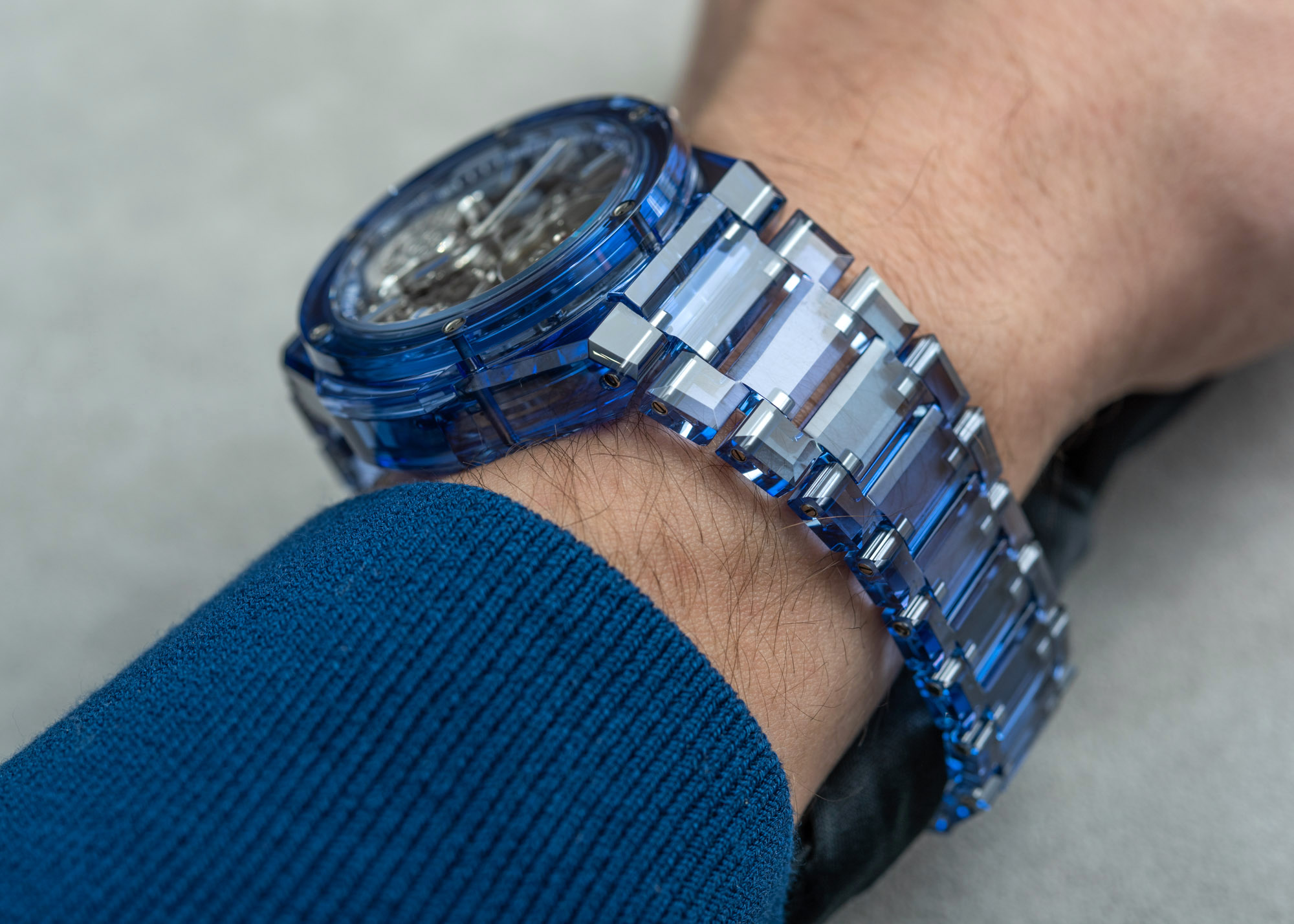
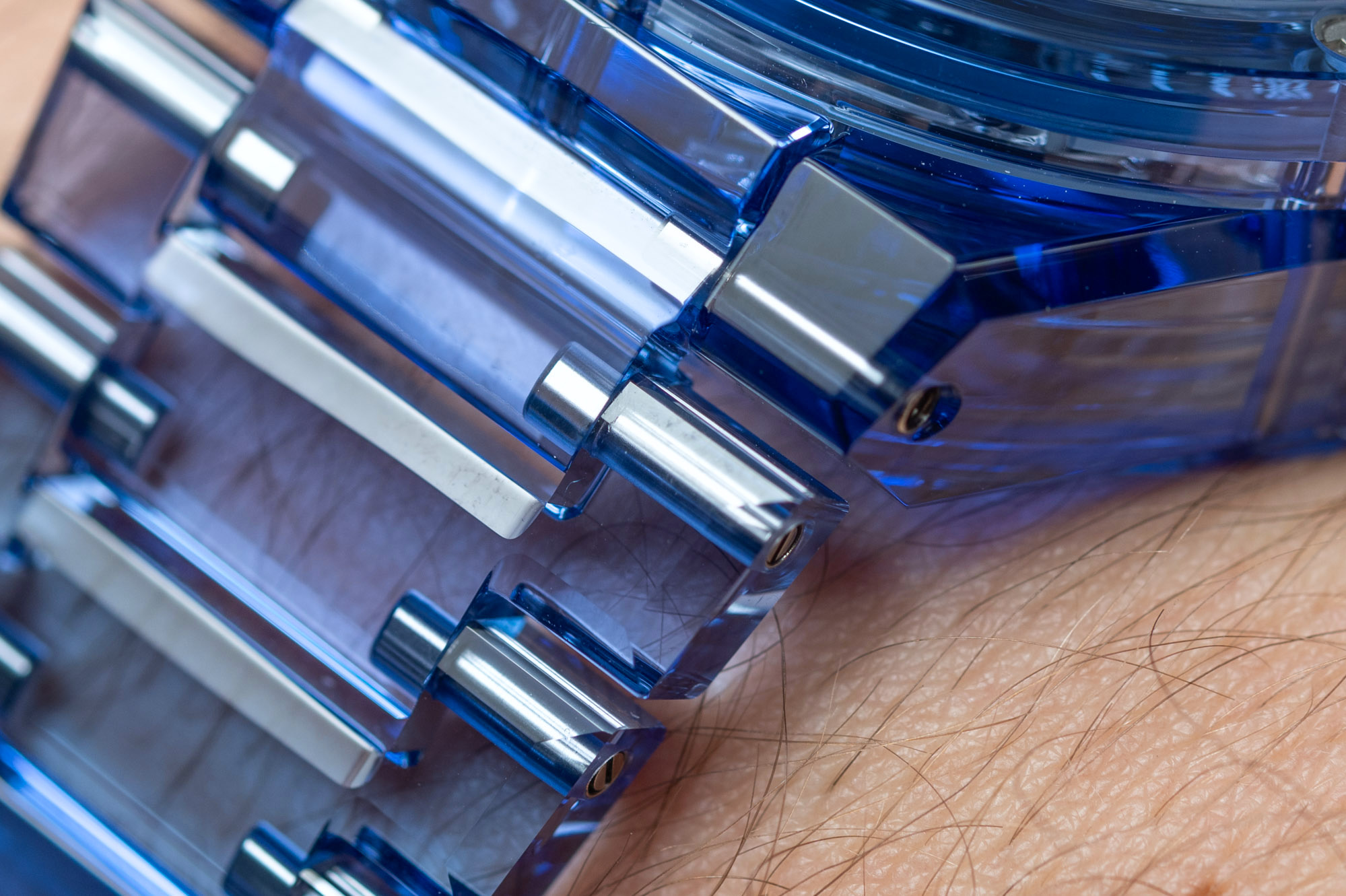
Second, you really need to have a fondness for bracelet link screws, spring bars, and every inch of your forearm, because you’ll be seeing a lot of them with this sapphire bracelet-equipped luxury watch. Unlike most metal bracelets, where the three or so links nearest the case are permanently fixed without any visible screws, on this blue sapphire crystal bracelet, every link is individually set and secured by a screw and is therefore easy to replace. This will certainly come handy when any of these links shatter upon impact with a sharp object or a hard floor. An interesting little detail that might escape many is how this bracelet appears to be a three-piece link design (like the metal and ceramic Integral bracelet on other Hublot watches) while in fact, these are long, complex, U-shaped links where each covers the full width of the bracelet.
The official guidance we received regarding the shock and impact resistance of sapphire was this: A ceramic bracelet might shatter if dropped from a height of 1 meter (3 feet) onto a hard floor. A sapphire crystal bracelet might do that after a drop from half that height. We then asked whether it could break if the watch was banged around while being worn. By contrast, this is highly unlikely and the watch can be worn with peace of mind.

The third reason why this is a ridiculous watch is, of course, the price. If you want a blue sapphire-cased, blue sapphire bracelet-equipped watch from Hublot, it will set you back $500,000. Oh, and it’s limited to 10 pieces, so it’s not like you’ll be the only one with it on — unless all the other 9 meet their untimely demise in contact with a marble floor in the living room of a multi-story penthouse high above one metropolis or another. Despite the durable and rugged connotations of an integrated bracelet and the porthole design, none of these will ever survive a dive either. Water resistance remains just 30 meters, in part to keep the gaskets slim and virtually invisible in this all-on-show execution, and in part because sapphire components can’t be squeezed together as tightly as their metal counterparts because, you guessed it, sapphire will crack.
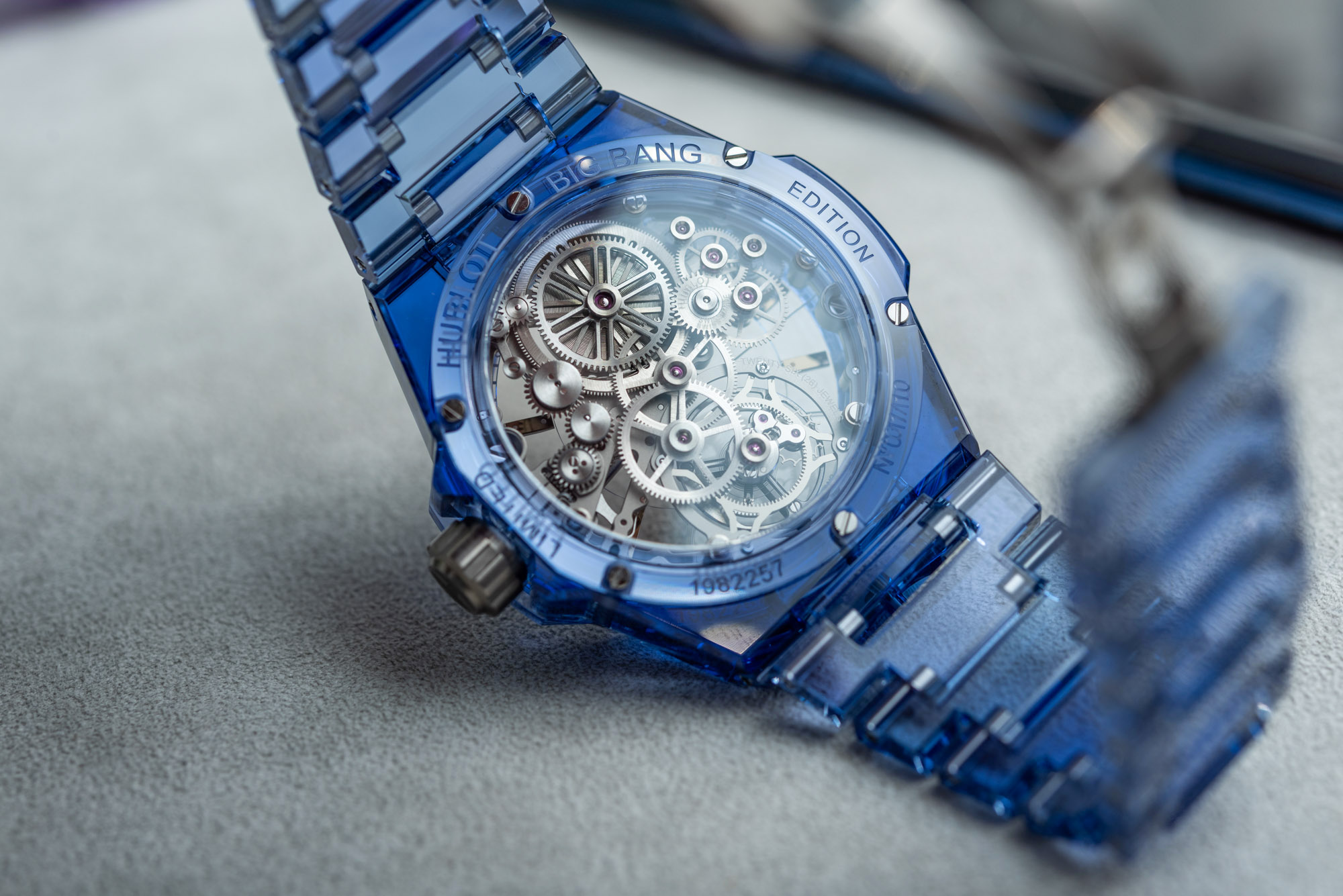
Why so expensive, then? We have covered sapphire crystal watch cases extensively before, so here’s what you need to know in a nutshell. Thanks to its density and immense hardness (which gives it its favorable scratch-resistant properties), sapphire is very challenging, time-consuming, and costly to machine. Once machined — over the course of tens if not hundreds of hours — each part takes tens of hours of manual labor to fully remove the opaque surface that remains after machining and bring every facet to its translucent glory. This applies to every big and small component of the $500,000 Hublot Big Bang Integrated Tourbillon Full Blue Sapphire watch, and explains why we are yet to see sapphire crystal cases and bracelets become more widely available at lower prices.
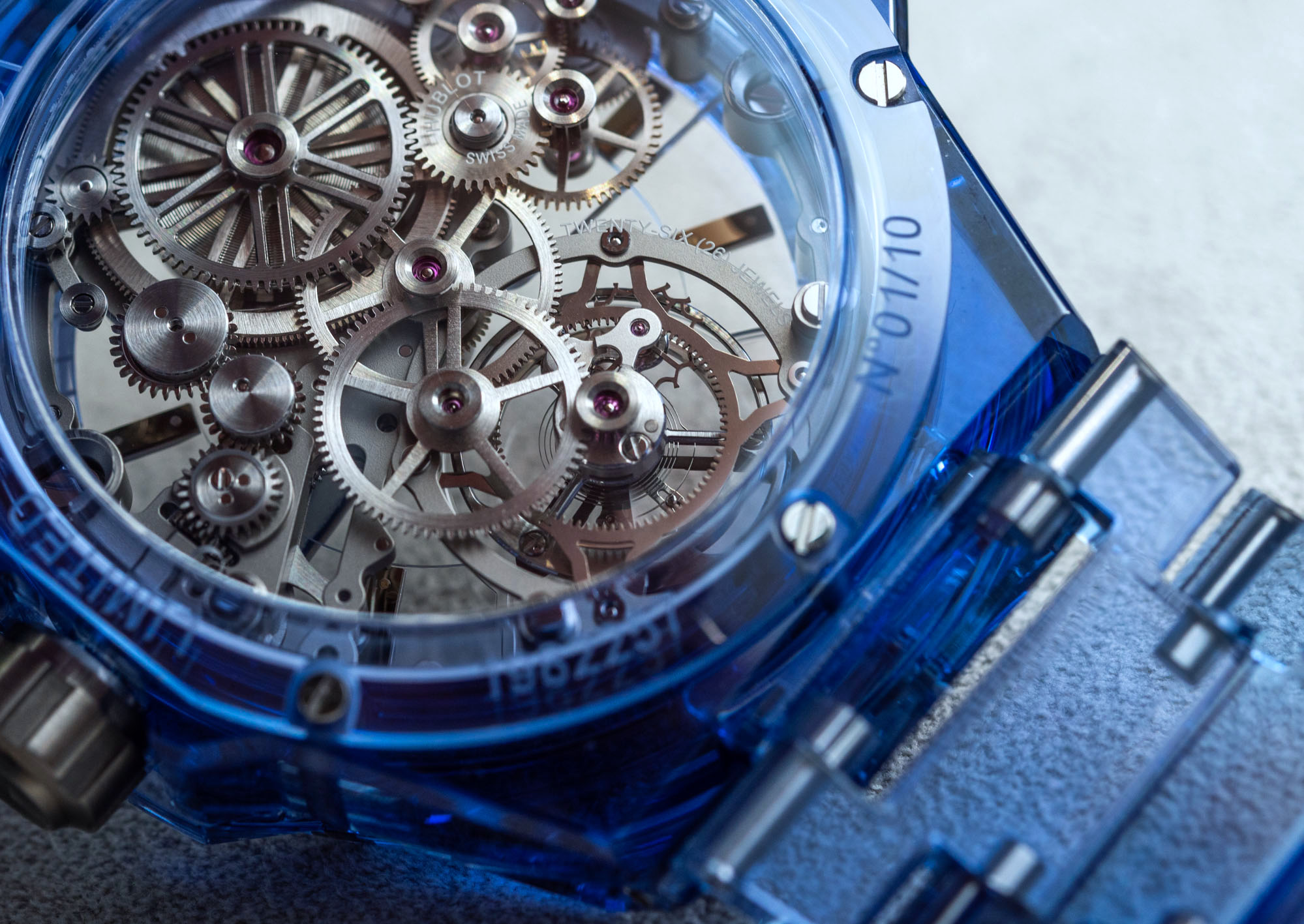

That said, this full blue sapphire piece is expensive even by sapphire-cased Hublot standards: A sapphire-cased Big Bang, mind you without the bracelet and tourbillon, costs $69,000. A bargain in comparison. Speaking of tourbillons, the Hublot blue sapphire watch is equipped with the openworked Caliber HUB6035, a self-winding manufacture movement with a tourbillon. Unquestionably impressive, especially with the sapphire discs that cover the tourbillon and carry the hour markers, it is nevertheless subpar compared to what you will find in some of the other watches offered for a cool half a million. This sort of money will get you grand complications with three or more times the components than in this HUB6035, and better finished, too. Getting this watch for the movement is of course missing the point entirely, but it is an interesting indicator of how the emphasis has shifted as far as preferences are concerned when justifying such a purchase.
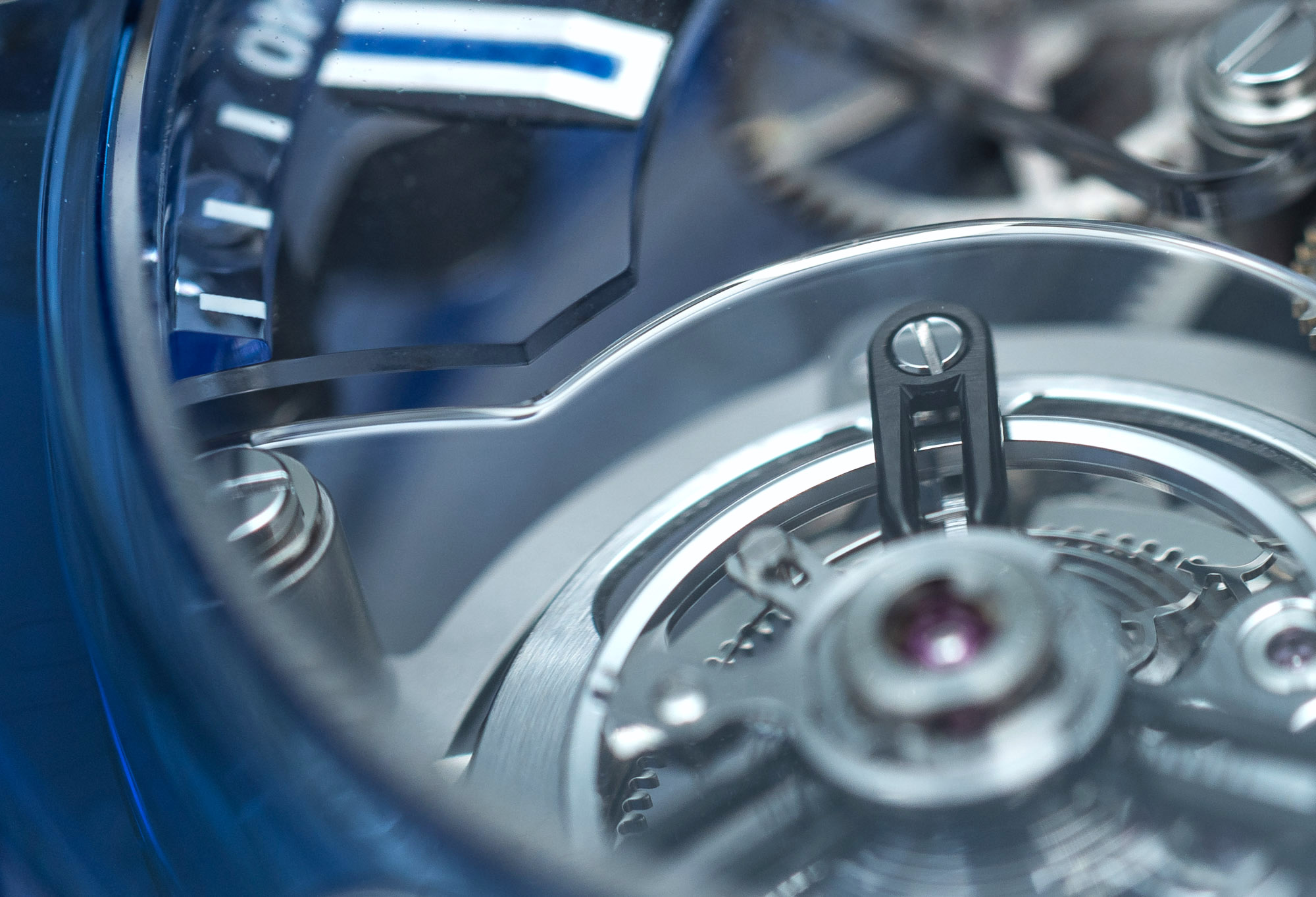
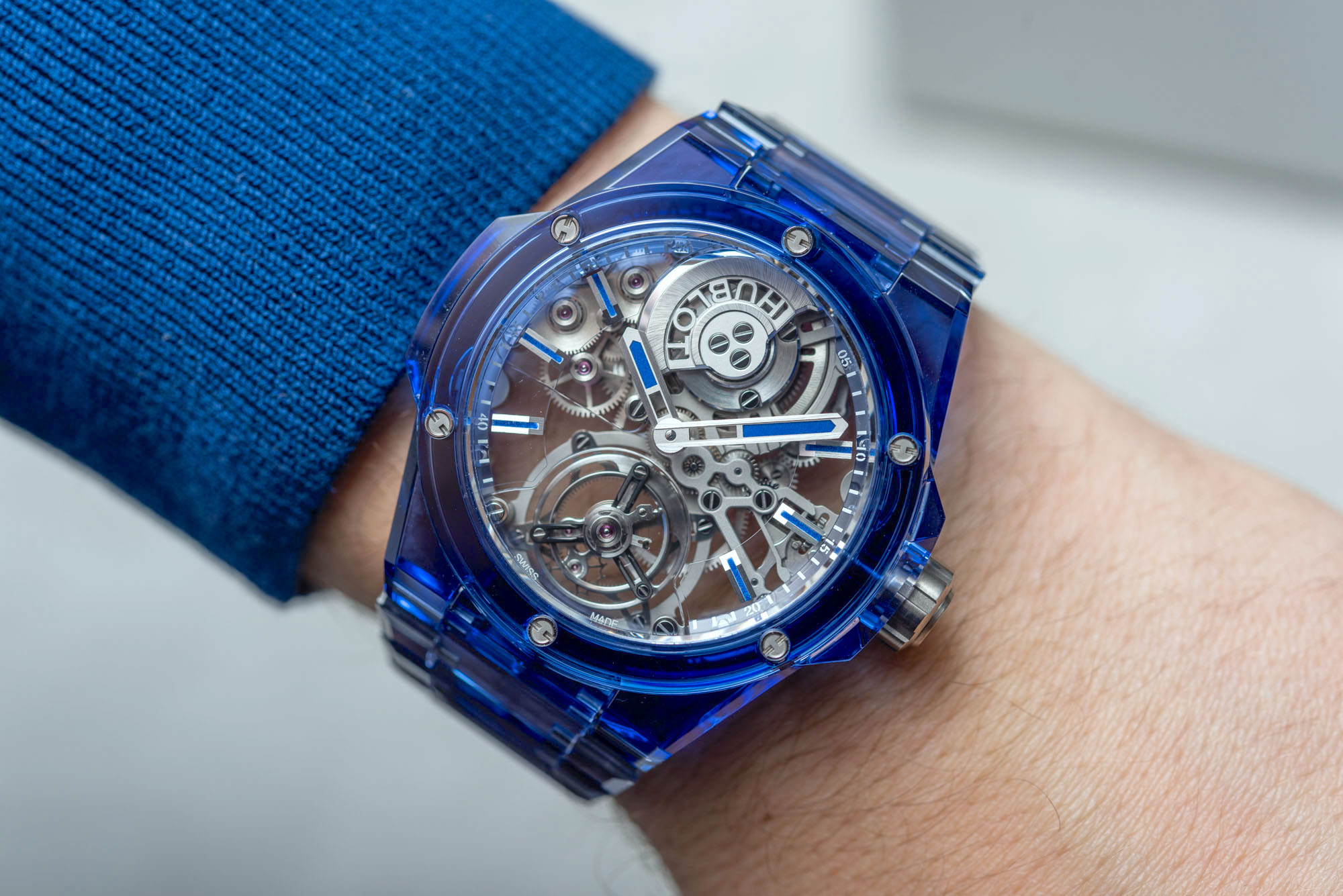
On the wrist, the 43mm-wide Big Bang Integrated in sapphire feels light, smooth, and top-heavy — it will wobble around. With its glossy translucence, and especially in this blue, it looks like a prop from a dated ’80s sci-fi movie and, just like one of those, it will likely cheer you up. Not in the way an A. Lange & Söhne Grand Complication would (that costs the same and we covered hands-on here) — but is that necessarily a bad thing? Well, that’s for everyone to decide on their own, but there’s no doubt ten very wealthy individuals out there will decide to get one of these half-a-million-dollar sci-fi props — and they’ll have a comically good time wearing it.
The Hublot Big Bang Integrated Tourbillon Full Blue Sapphire watch is priced at $500,000 and is limited to just 10 pieces. You can learn more at the brand’s website.

